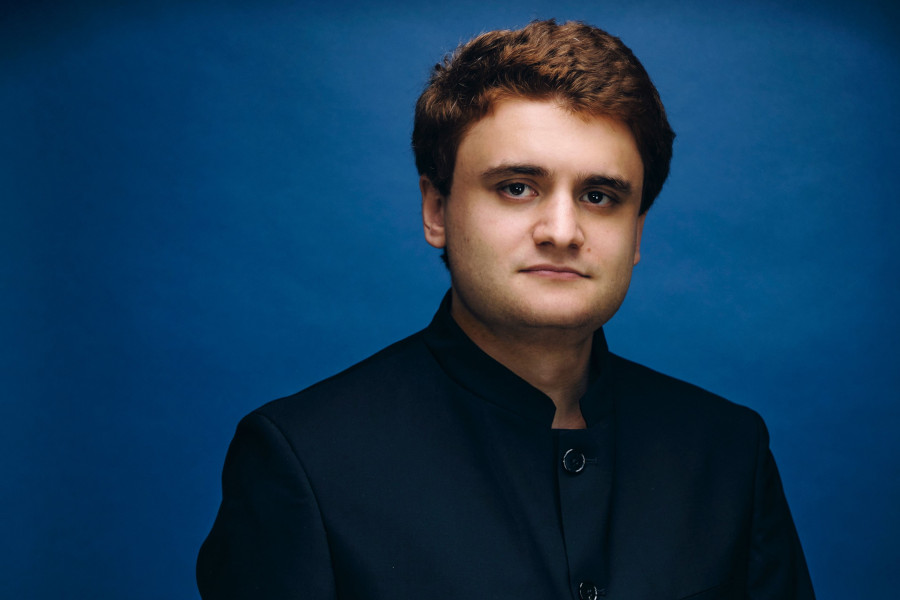Born in 1995, the Latvian pianist Georgijs Osokins gained fame and recognition with his performances during the Chopin Competition in Warsaw. Together with the NFM Wrocław Philharmonic, he will present his interpretation of one of Ludwig van Beethoven’s piano concertos. The conductor will be Joel Sandelson, the winner of the Herbert von Karajan Young Conductors Award in 2021.
In Greek mythology, Prometheus was one of the Titans. Because he stole fire from the gods and gave it to people, he was believed to be a protector of crafts and a symbol of progress. No wonder that his figure turned out to be an inspiration for Ludwig van Beethoven, who devoted his only ballet work to him, entitled The Creations of Prometheus. It was first staged in 1801 at the Viennese Burgtheater. During the concert, an orchestral introduction to this work will be played. Beethoven’s Piano Concerto No. 4 in G major was premiered in 1807 during a private concert at the estate of the artist’s patron, Prince Franz Joseph von Lobkowitz. General public heard it a year later at the Theater an der Wien during an extraordinary concert. Symphonies nos. 5 and 6 and the Choral Fantasy were also premiered at that time, and the composer undertook to play the solo part. Soon afterwards, his hearing deteriorated so much that it turned out to be his last public appearance as a pianist. Although the Concerto in G major is a light and lyrical work, it contains many revolutionary elements, such as the presentation of the main material by the piano, and not by the orchestra, which had hitherto played the main part in instrumental concertos. In the second movement, the violent entrances of the strings are contrasted with the gentle and lyrical part of the piano. The narrative gradually calms down, and one of the composer’s early biographers compared the fragment to the image of Orpheus Taming the Wild Beasts.
The second part of the concert will open with a dignified, austere introduction to Parsifal, Richard Wagner’s last completed work. The composer did not call it an opera or a musical drama, but a solemn stage mystery. The prelude contains several elements recurring in the further development of the work. One of them is a motif symbolising the Holy Grail, which is a quote from the Dresden amen, a liturgical melody Wagner had a great fondness for. It also appears in two of his other works – Das Liebesverbot and Tannhäuser. The last piece in the programme will be the one-movement Symphony No. 7 in C major by Jean Sibelius, dated1924. Among the most characteristic elements of this composition is a solemn theme played by trombones, called the “Aino theme”. Sibelius was fascinated by the work of Wagner, and right at the beginning of this work there is an allusion to one of his widely recognized compositions, Tristan und Isolde.
This concert is a part of the Lower Silesia Province 25th anniversary celebrations.
![]()

